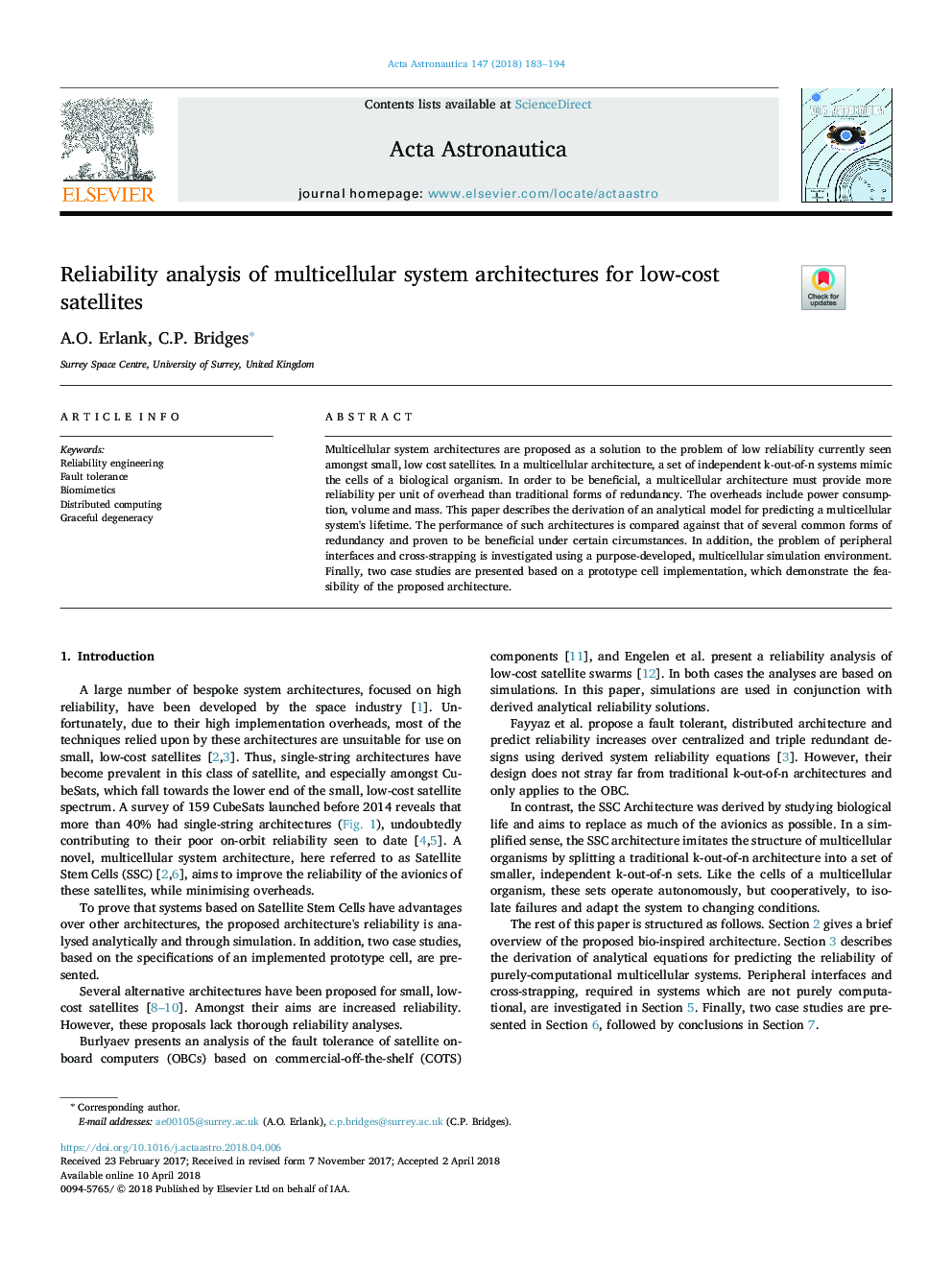| Article ID | Journal | Published Year | Pages | File Type |
|---|---|---|---|---|
| 8055540 | Acta Astronautica | 2018 | 12 Pages |
Abstract
Multicellular system architectures are proposed as a solution to the problem of low reliability currently seen amongst small, low cost satellites. In a multicellular architecture, a set of independent k-out-of-n systems mimic the cells of a biological organism. In order to be beneficial, a multicellular architecture must provide more reliability per unit of overhead than traditional forms of redundancy. The overheads include power consumption, volume and mass. This paper describes the derivation of an analytical model for predicting a multicellular system's lifetime. The performance of such architectures is compared against that of several common forms of redundancy and proven to be beneficial under certain circumstances. In addition, the problem of peripheral interfaces and cross-strapping is investigated using a purpose-developed, multicellular simulation environment. Finally, two case studies are presented based on a prototype cell implementation, which demonstrate the feasibility of the proposed architecture.
Related Topics
Physical Sciences and Engineering
Engineering
Aerospace Engineering
Authors
A.O. Erlank, C.P. Bridges,
